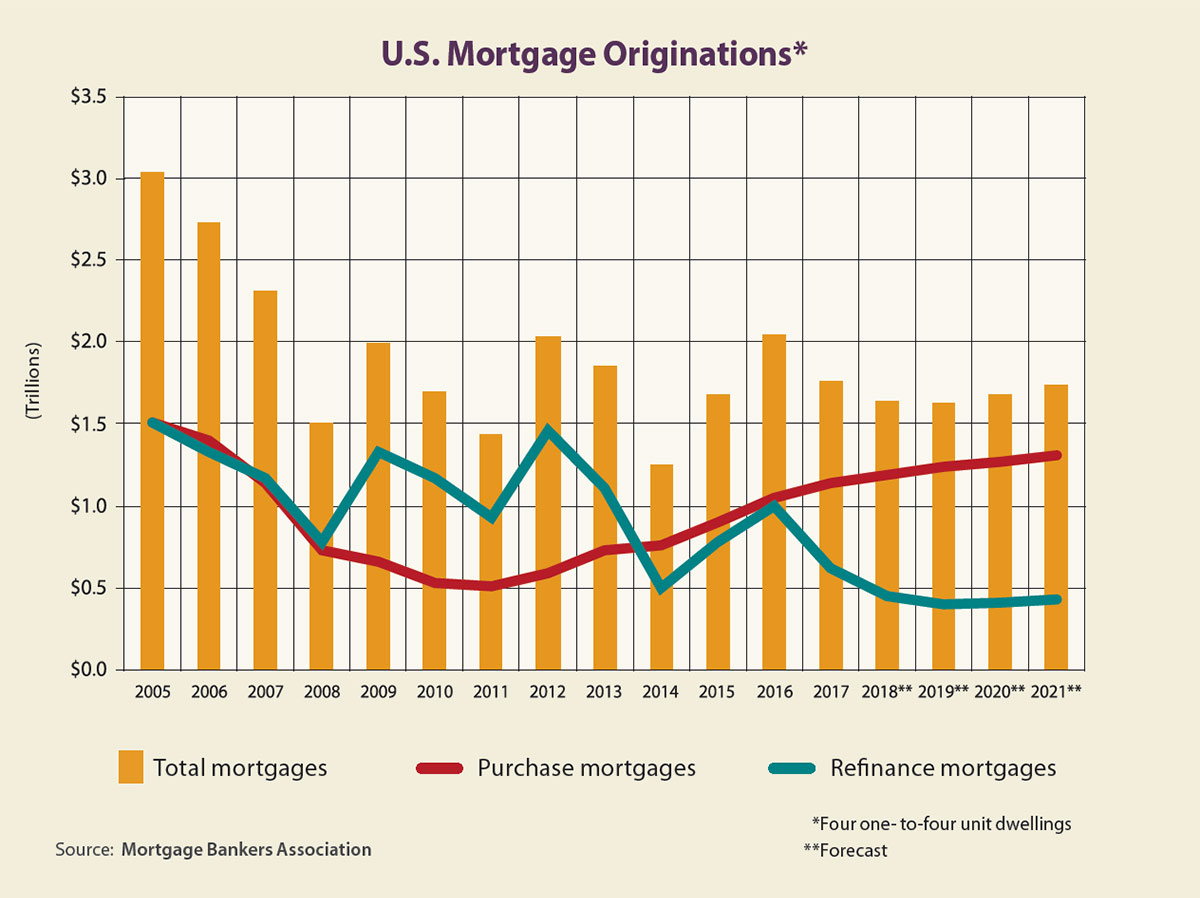The U.S economy and labor market continue to show strength heading into 2019, which bodes well for the housing market.
Unemployment is at its lowest level since 1969, wages are finally showing meaningful gains above inflation and employment growth is averaging over 200,000 job additions per month. Furthermore, recent survey data show most consumers are spending and optimistic about their current and future financial situation.
We see the prospects for wages to trend higher, especially given how many job openings there are in the economy. Can the unemployment rate go any lower? We believe it can — down to 3.5 percent by the end of 2019, which should lead to faster wage gains and sustainable growth in purchase demand.
Despite these favorable economic conditions, the housing market is struggling to reach its full potential of rising home sales and increased construction. Higher mortgage rates, coupled with stubbornly low inventory levels of new and existing homes for sale, continue to prevent too many aspiring homebuyers from reaching the market.
While some areas are seeing a much- needed improvement in inventory levels, overall supply in many markets is still not sufficient to meet demand. Not enough current homeowners are listing their homes for sale, and builders face challenges finding the labor to complete projects.
Additionally, many builder costs have increased dramatically, land for building has been tough to secure, and financing for smaller builders to fund their projects has been a challenge. That is why housing starts this year and next — especially for single-family homes — will unfortunately continue to undershoot what is needed to balance supply with growing demand.
There is some good news for households looking to finance a home purchase, however. Mortgage availability is slowly increasing. Lenders are making more conventional low-downpayment programs available to prospective borrowers.
The increase in availability is likely in response to the growing number of first-time buyers in the market who, despite facing affordability challenges, are seeing increased success reaching the market. Meanwhile, jumbo-credit availability also is expanding, with the jumbo index increasing this past October to its highest level since our survey began in 2004.
The solid economy, robust hiring and rising wages also are keeping mortgage delinquencies and foreclosure inventories at, or near, their lowest levels in a decade. Natural disasters, unfortunately, are a major factor in determining whether borrowers can make timely mortgage payments.
Because of this, there may be some noise in the quarterly data in coming months, as a result of another busy hurricane season in the Southeast and the ongoing wildfires in California. The overall story, however, remains the same: Nearly all homeowners are making on-time mortgage payments, which is keeping delinquency rates at very low levels.
As we move into 2019, the healthy job market and demographics — think the large share of millennials entering the prime ages to buy a home — will help to drive the increase in purchase-mortgage originations. These two factors are the primary reason why the Mortgage Bankers Association is forecasting $1.24 trillion in purchase-mortgage originations in 2019 — up 4.2 percent from 2018. With higher mortgage rates, refinance originations will continue to trend lower next year, decreasing by 12.4 percent — down to $395 billion.
The current economic expansion also is expected to forge ahead in 2019, with expected gross domestic product growth at 2.3 percent, before some deceleration to 1.5 percent in 2020 and 2021. While the Federal Reserve is expected to increase short-term rates further this year, 30-year mortgage rates should rise only modestly from this point forward — averaging 5.1 percent for 2019 through 2021.
Author
-

Mike Fratantoni is chief economist and senior vice president of research and industry technology at the Mortgage Bankers Association (MBA). He is responsible for overseeing MBA’s industry surveys, benchmarking studies, economic and mortgage origination forecasts, industry-technology efforts, and policy-development research for the single-family and commercial/multifamily markets. Prior to joining MBA, Fratantoni worked in risk management and senior economist roles at Washington Mutual and Fannie Mae.




